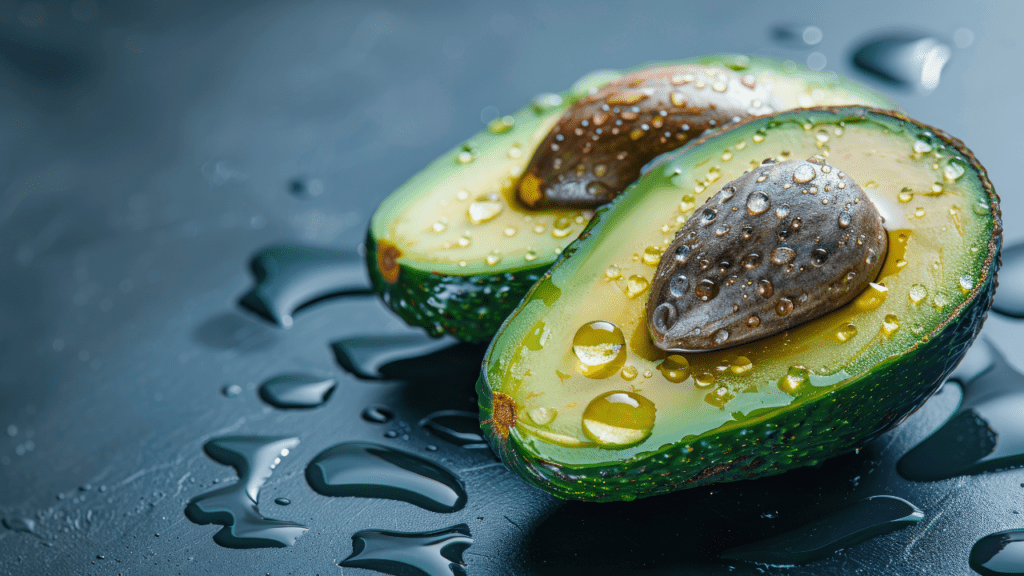
How to Grow Avocado Seed: Your Ultimate Guide to Growing Avocado Trees
Growing an avocado tree from a seed is a rewarding and educational experience. If you’re wondering how to grow avocado seed, this comprehensive guide will walk you through each step of the process, from preparing the seed to nurturing your avocado plant into a thriving tree. Follow these instructions, and soon you’ll have your own avocado tree at home.
Table of Contents
ToggleUnderstanding Avocado Seeds
Anatomy of an avocado seed
The avocado seed is the large pit at the center of the avocado fruit. It is oval in shape and can vary in size, depending on the variety of avocado. The seed is covered in a brown, papery skin, and the inside contains a single embryo that will eventually grow into a new avocado tree. When planting an avocado seed, it’s important to choose a healthy, undamaged seed to ensure successful growth.
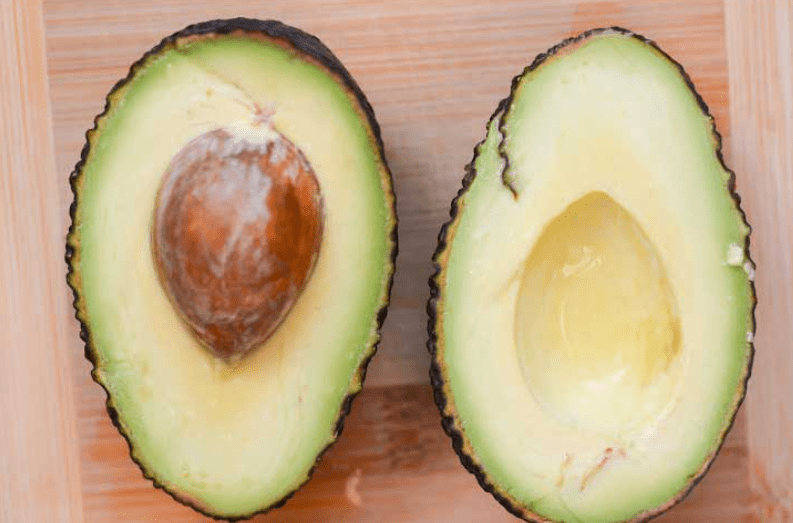
Varieties of avocados and seed characteristics
Avocados come in different varieties, with each variety having its own unique seed characteristics. Some avocado seeds are larger and rounder, while others may be smaller and more oval in shape. The color of the seed can also vary, ranging from light brown to dark brown. When choosing an avocado seed to grow, it’s important to select a seed from a variety that is well-suited for your climate and growing conditions. By understanding the different varieties and seed characteristics, you can successfully grow an avocado tree from a seed that is best suited for your home environment.
Why grow avocados from seed?
Growing avocados from seed can be a fun and rewarding experience. It allows you to witness the growth and development of a new avocado tree from the very beginning. Additionally, it’s a cost-effective way to start your own avocado tree without having to purchase a sapling. By growing avocados from seed, you can also experiment with different varieties and find the best-suited avocado tree for your home environment. It’s a great way to connect with nature and learn about the growing process of avocados. Plus, having your own avocado tree can provide you with a fresh and healthy supply of avocados right at home. So, why not give it a try and grow your own avocado tree from seed?
Selecting and Preparing the Avocado Seed
Choosing a ripe avocado for seed extraction
Is crucial for successful growth. Look for an avocado that is ripe but not overripe. It should yield slightly to gentle pressure when squeezed. Once you have chosen the perfect avocado, carefully remove the seed from the fruit. Wash the seed thoroughly to remove any remaining avocado flesh, and then dry it with a paper towel. Be careful not to remove the brown skin on the seed, as this will help protect it during the germination process. Once the seed is clean and dry, it’s ready to be planted. With proper care and attention, you can watch your avocado seed grow into a healthy and thriving tree.
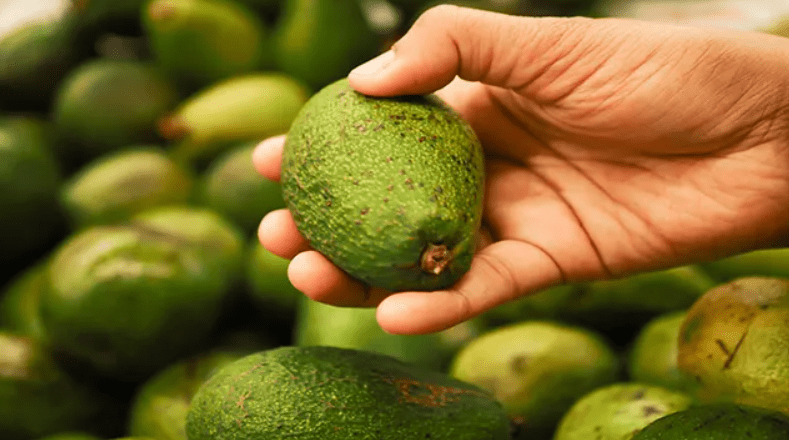
Step-by-step guide to extracting the seed
First, you’ll want to look for an avocado that is ripe but not overripe. It should yield slightly to gentle pressure when squeezed. Once you have chosen the perfect avocado, carefully remove the seed from the fruit. This can be done by gently twisting the avocado in half and then using a spoon to scoop out the seed. Wash the seed thoroughly to remove any remaining avocado flesh, and then dry it with a paper towel. Be careful not to remove the brown skin on the seed, as this will help protect it during the germination process. Once the seed is clean and dry, it’s ready to be planted. You can do this by sticking 3-4 toothpicks into the seed at even intervals and then suspending it over a glass of water with the bottom of the seed just touching the water. With proper care and attention, you can watch your avocado seed grow into a healthy and thriving tree. Be patient, as it can take several weeks for the seed to sprout, but with the right conditions, you can successfully grow your own avocado tree at home.
Cleaning and preparing the avocado seed for germination
Is an important step in the process of growing your own avocado tree. First, gently twist the avocado in half and use a spoon to carefully scoop out the seed. Make sure to wash the seed thoroughly to remove any remaining avocado flesh, and then dry it with a paper towel. It’s important not to remove the brown skin on the seed, as this will help protect it during the germination process.
Once the seed is clean and dry, it’s ready to be planted. You can do this by sticking 3-4 toothpicks into the seed at even intervals and then suspending it over a glass of water with the bottom of the seed just touching the water. This will allow the seed to start sprouting. With proper care and attention, you can watch your avocado seed grow into a healthy and thriving tree.
It’s important to be patient, as it can take several weeks for the seed to sprout. However, with the right conditions and consistent care, you can successfully grow your own avocado tree at home. Enjoy the process and watch as your avocado seed transforms into a beautiful and fruitful tree.
Methods for Germinating Avocado Seeds
Water method: Using toothpicks and a glass of water
Setting up the seed for germination
Is a simple and effective method. Once the seed is clean and dry, it’s ready to be planted. You can do this by sticking 3-4 toothpicks into the seed at even intervals and then suspending it over a glass of water with the bottom of the seed just touching the water. This will allow the seed to start sprouting. With proper care and attention, you can watch your avocado seed grow into a healthy and thriving tree. It’s important to be patient, as it can take several weeks for the seed to sprout. However, with the right conditions and consistent care, you can successfully grow your own avocado tree at home. Enjoy the process and watch as your avocado seed transforms into a beautiful and fruitful tree.
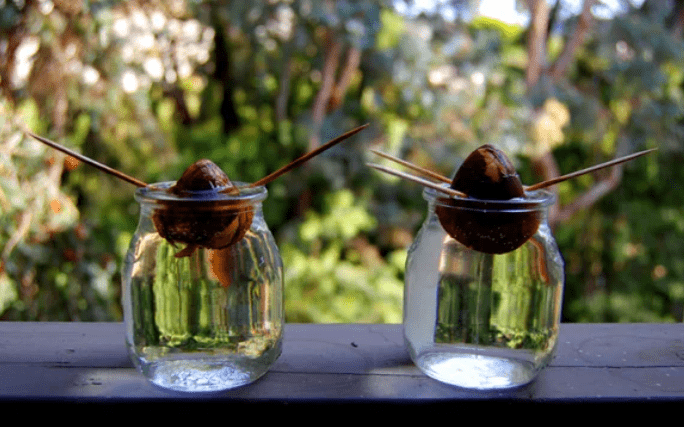
Monitoring and caring for the seed during germination
Is an important part of the process. Once you have planted the seed and it has started to sprout, it’s important to make sure it has the right conditions to thrive. This includes providing it with enough sunlight, water, and proper drainage. You should also make sure to protect the seed from extreme temperatures and harsh weather conditions. Keep an eye on the soil to make sure it stays moist but not waterlogged. As the seed grows into a tree, continue to monitor its growth and provide it with the care it needs to flourish. With patience and attention to detail, you can successfully grow an avocado tree from a seed and enjoy the experience of nurturing a plant from its earliest stages.
Soil method: Planting the seed directly into soil
Preparing the soil and planting the avocado seed
First, you’ll want to start by preparing the soil. Make sure the soil is well-draining and loose to give the avocado seed the best chance to grow. You can mix in some organic matter, like compost, to help improve the soil’s quality.
To plant the avocado seed, you’ll want to gently clean it and carefully remove any outer skin. Then, insert toothpicks into the seed to suspend it over a glass of water. The broader end of the seed should be in the water, and the toothpicks will help keep it in place.
After about six weeks, you should start to see the seed sprout and develop roots. Once the roots are about two to three inches long, you can carefully plant the seed in a pot with well-draining soil. Make sure to keep the soil consistently moist, but not waterlogged, to help the seedling grow.
As the avocado tree grows, make sure to provide it with enough sunlight and continue to monitor its growth. With proper care and attention, you can successfully grow an avocado tree from a seed and enjoy the process of nurturing a plant from its earliest stages.
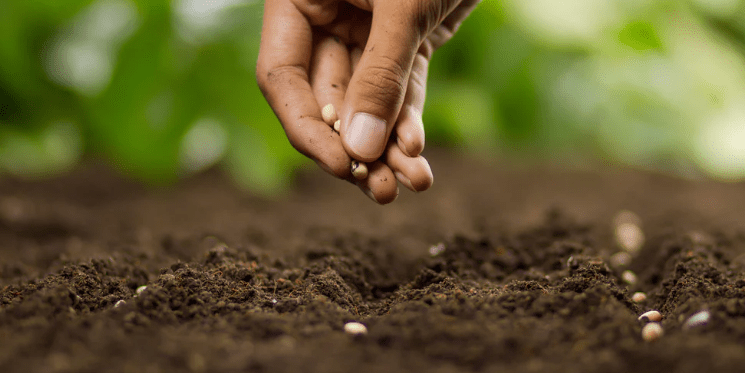
Watering and caring for the seedling
Is a crucial part of the process to grow an avocado tree from a seed. Once you have suspended the seed over a glass of water and it has sprouted and developed roots, it is important to carefully plant the seed in a pot with well-draining soil. After planting, make sure to keep the soil consistently moist, but not waterlogged, to help the seedling grow. It is important to monitor the growth of the avocado tree and provide it with enough sunlight. By providing the proper care and attention, you can successfully grow an avocado tree from a seed and enjoy the process of nurturing a plant from its earliest stages.
Caring for Avocado Seedlings
Watering requirements for avocado seedlings
When it comes to watering avocado seedlings, it’s important to keep the soil consistently moist, but not waterlogged. Make sure the pot has drainage holes to prevent water from pooling at the bottom. During the growing season, you may need to water the seedling more frequently, but be sure to let the top layer of soil dry out slightly between waterings. As the seedling grows, you can adjust the watering schedule based on the specific needs of the plant. It’s important to monitor the soil and the overall health of the seedling to ensure it is getting the right amount of water. With proper care and attention to watering, your avocado seedling has the best chance of thriving and growing into a healthy tree.
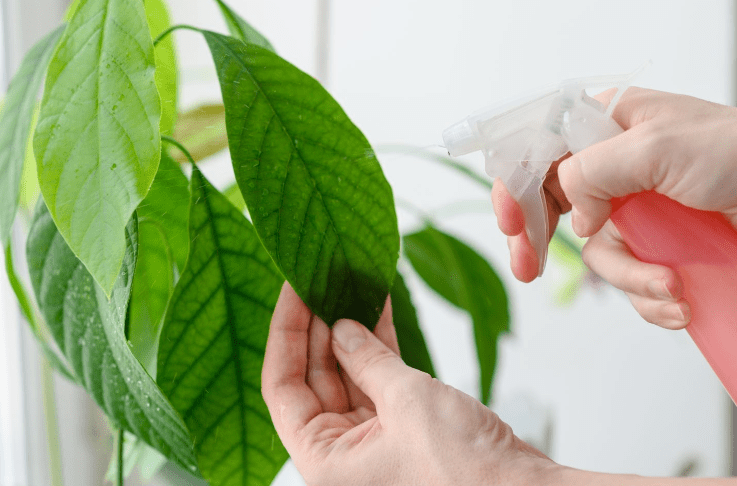
Light and temperature considerations
Are crucial factors to consider when growing avocado seedlings. Avocado plants thrive in bright, indirect sunlight, so it’s important to place your seedling in a location where it will receive plenty of light throughout the day. If you are growing your seedling indoors, placing it near a south-facing window can help provide the necessary sunlight. In terms of temperature, avocado seedlings prefer warm, consistent temperatures between 60-85 degrees Fahrenheit. It’s important to avoid exposing the seedling to cold drafts or drastic temperature changes, as this can negatively impact its growth. By providing the right amount of light and maintaining a consistent temperature, you can ensure that your avocado seedling has the ideal environment for healthy growth.
Fertilizing young avocado plants
Is an important step in ensuring their healthy growth. When the seedling has grown to about 6-8 inches tall, you can start fertilizing it. Use a balanced fertilizer with an N-P-K ratio of 10-10-10 or 8-3-9 to provide essential nutrients for the plant. Fertilize the plant every 6-8 weeks during the growing season, which is typically from spring to early fall.
When applying fertilizer, be sure to follow the instructions on the product label to avoid over-fertilizing, which can harm the plant. Water the plant thoroughly after applying the fertilizer to help distribute the nutrients into the soil.
It’s important to monitor the growth of your avocado seedling and adjust the fertilization schedule as needed. As the plant grows, you may need to increase the frequency of fertilization to support its increasing nutrient needs.
By providing the right amount of fertilizer and closely monitoring the plant’s growth, you can help your young avocado plant thrive and develop into a healthy, productive tree.
Transplanting Avocado Seedlings
When to transplant avocado seedlings
Transplant avocado seedlings into larger pots when they outgrow their current containers. This is typically done when the roots start to fill the pot and become visibly crowded. It’s best to transplant during the spring or summer months when the plant is actively growing and has the best chance of adjusting to the new environment. When transplanting, be sure to choose a pot that is 2-4 inches larger in diameter than the current one and use well-draining soil to prevent waterlogging. Carefully remove the avocado seedling from its current pot, being careful not to damage the roots, and place it into the new pot at the same depth as before. Water the plant thoroughly after transplanting to help it settle into its new home. With proper care and attention, your avocado seedling will continue to grow and thrive in its new container.
Choosing the right location for outdoor planting
Is crucial for the success of your plants. Consider factors such as sunlight, soil quality, and drainage when selecting a spot for planting. Most plants require at least 6-8 hours of sunlight per day, so choose a location that receives adequate sunlight. Additionally, ensure that the soil in the area is well-draining to prevent waterlogging, which can lead to root rot. It’s also important to consider the type of soil in the area and whether it is suitable for the specific plant you want to grow. Some plants may require acidic soil, while others may thrive in alkaline soil. Lastly, consider the proximity to other plants and structures when choosing a location for outdoor planting. Make sure that the plants have enough space to grow and that they won’t be obstructed by other plants or structures. By carefully selecting the right location for outdoor planting, you can create an environment where your plants can thrive and flourish.
Step-by-step guide to transplanting avocado seedlings
Transplanting avocado seedlings can be a rewarding and enjoyable process. To start, you’ll want to choose a location that receives plenty of sunlight, as avocado plants require at least 6-8 hours of sunlight per day. Additionally, ensure that the soil in the chosen area is well-draining to prevent waterlogging and root rot. It’s also important to consider the type of soil in the area and whether it is suitable for avocado plants. Some avocados may require acidic soil, while others may thrive in alkaline soil.
When transplanting the avocado seedlings, carefully remove them from their original containers and gently loosen the roots. Then, dig a hole in the selected planting area that is slightly larger than the root ball of the seedling. Place the seedling in the hole and backfill it with soil, making sure to carefully pat the soil around the base of the plant to secure it in place.
After transplanting, it’s important to water the avocado seedlings thoroughly and continue to provide them with regular watering as they establish themselves in their new location. It’s also important to monitor the plants for any signs of stress or disease, and take appropriate measures to address any issues that may arise.
By following these step-by-step guidelines, you can successfully transplant avocado seedlings and help them thrive in their new outdoor environment.
Pruning and Training Avocado Trees
Importance of pruning avocado trees
Pruning avocado trees is essential for their health and productivity. Pruning helps to shape the tree, remove dead or diseased branches, and encourage new growth. It also helps to maintain the overall size of the tree and improve air circulation, which can prevent disease. Additionally, pruning can help to increase fruit production and improve the quality of the avocados. It’s important to prune avocado trees regularly, especially in the early years of the tree’s growth, to establish a strong and healthy structure. Proper training and pruning of avocado trees will result in a more productive and manageable tree for years to come. By taking the time to prune and train your avocado trees, you can help them thrive and produce high-quality fruit.
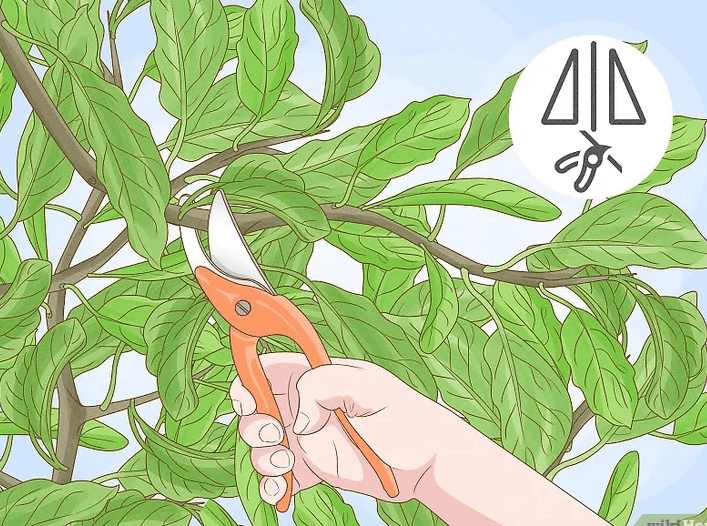
Techniques for pruning to encourage healthy growth
Include removing dead or diseased branches, thinning out crowded areas, and shaping the tree to promote a strong structure. When pruning avocado trees, it’s important to use sharp, clean pruning tools to make clean cuts and minimize damage to the tree. Start by removing any dead, damaged, or diseased branches, as well as any branches that are crossing or rubbing against each other. This will improve air circulation and reduce the risk of disease. Additionally, thin out any crowded areas to allow sunlight and air to reach all parts of the tree. Shape the tree by pruning to encourage a strong, open structure that can support the weight of fruit. It’s also important to consider the timing of pruning, as avocado trees are best pruned in the late winter or early spring before new growth begins. By using these techniques for pruning, you can encourage healthy growth and improve the overall health and productivity of your avocado trees.
Training avocado trees for better structure and fruit production
Involves proper pruning and shaping techniques. When pruning avocado trees, it’s important to use sharp, clean pruning tools to make clean cuts and minimize damage to the tree. Start by removing any dead, damaged, or diseased branches, as well as any branches that are crossing or rubbing against each other. This will improve air circulation and reduce the risk of disease. Additionally, thin out any crowded areas to allow sunlight and air to reach all parts of the tree.
Shaping the tree through pruning is essential in encouraging a strong, open structure that can support the weight of fruit. This helps to prevent branches from breaking under the weight of the fruit. It’s also important to consider the timing of pruning, as avocado trees are best pruned in the late winter or early spring before new growth begins.
By using these techniques for pruning, you can encourage healthy growth and improve the overall health and productivity of your avocado trees. This will ultimately lead to better fruit production and a more visually appealing tree. With the right training and care, avocado trees can thrive and produce high-quality fruit.
Common Problems and Solutions
Pest management for avocado trees
Is an essential part of caring for your trees. One of the most common pests that avocado trees face is the avocado lace bug, which can cause damage to the leaves and affect the overall health of the tree. To manage this pest, it’s important to regularly monitor your trees for signs of infestation and take appropriate action when necessary.
Another common pest is the avocado thrip, which can cause damage to the fruit and leaves of the tree. To manage this pest, you can use insecticidal soaps or oils to help control the population. It’s also important to maintain good cultural practices, such as proper irrigation and fertilization, to keep the tree healthy and better able to withstand pest infestations.
In addition to pests, avocado trees can also be affected by diseases such as root rot and anthracnose. Proper sanitation and good cultural practices, such as proper pruning and fertilization, can help prevent these diseases from affecting your trees.
Overall, effective pest management for avocado trees involves a combination of monitoring, cultural practices, and, when necessary, the use of pesticides. By taking proactive measures to address pest and disease issues, you can help ensure the health and productivity of your avocado trees.
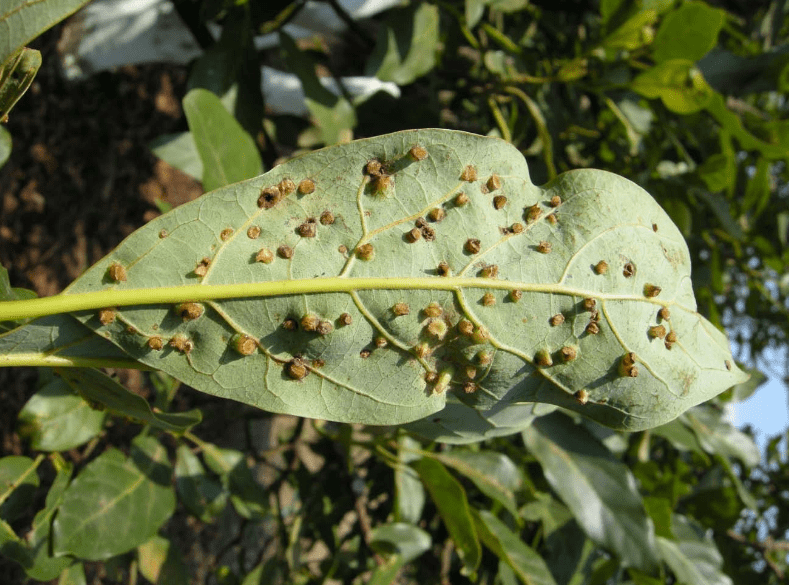
Diseases that affect avocado plants
Include root rot, anthracnose, and the avocado thrip. Root rot is caused by a soil-borne fungus and can lead to the decay of the tree’s roots, ultimately causing the tree to die. To prevent root rot, it’s important to ensure that the soil is well-draining and to avoid overwatering. Anthracnose is a fungal disease that can cause dark lesions on the fruit, leaves, and twigs of the tree. To manage anthracnose, it’s important to promote good air circulation and to prune the tree to allow for sunlight and airflow. Additionally, applying a fungicide can help control the spread of the disease. Another common pest is the avocado thrip, which can cause damage to the fruit and leaves of the tree. To manage this pest, you can use insecticidal soaps or oils to help control the population. It’s also important to maintain good cultural practices, such as proper irrigation and fertilization, to keep the tree healthy and better able to withstand pest infestations. In addition to pests, avocado trees can also be affected by diseases such as root rot and anthracnose. Proper sanitation and good cultural practices, such as proper pruning and fertilization, can help prevent these diseases from affecting your trees. Overall, effective pest management for avocado trees involves a combination of monitoring, cultural practices, and, when necessary, the use of pesticides. By taking proactive measures to address pest and disease issues, you can help ensure the health and productivity of your avocado trees.
Harvesting Avocados from Your Tree
Signs that your avocado tree is ready to fruit
When it comes to avocado trees, there are specific signs that indicate that your tree is ready to fruit. One of the most common signs is the appearance of small, green, immature fruit on the tree. This means that the flowering process has been successful and the tree is starting to produce fruit. Another sign to look for is the shedding of old leaves and the growth of new ones. This indicates that the tree is entering a new growth phase and is preparing to produce fruit. Additionally, the tree may start to develop a fuller canopy, which is another indication that it is getting ready to bear fruit. Keep an eye on these signs to determine when your avocado tree is ready to fruit and be patient as it takes time for the fruit to fully develop and ripen.
How to harvest and store avocados
Harvesting avocados from your tree is a rewarding experience. When it comes to avocado trees, there are specific signs that indicate that your tree is ready to fruit. One of the most common signs is the appearance of small, green, immature fruit on the tree. This means that the flowering process has been successful and the tree is starting to produce fruit. Another sign to look for is the shedding of old leaves and the growth of new ones. This indicates that the tree is entering a new growth phase and is preparing to produce fruit. Additionally, the tree may start to develop a fuller canopy, which is another indication that it is getting ready to bear fruit. Keep an eye on these signs to determine when your avocado tree is ready to fruit and be patient as it takes time for the fruit to fully develop and ripen.
When it comes to harvesting avocados, it is best to wait until they are fully mature and can be easily removed from the tree with a gentle twist. If the fruit does not come off the tree easily, it is not yet ready to be harvested. Once harvested, avocados should be stored at room temperature until they ripen. You can speed up the ripening process by placing them in a paper bag with a banana or apple. Once ripe, avocados can be stored in the refrigerator to slow down the ripening process and extend their shelf life. Properly harvested and stored avocados can provide you with delicious and nutritious fruit for weeks to come.
Benefits of Growing Avocado Trees at Home
Avocado trees are a great addition to any home garden. Not only do they provide a beautiful and lush addition to your landscape, but they also offer a bounty of delicious and nutritious fruit. Growing avocado trees at home allows you to have a fresh supply of avocados at your fingertips, saving you money and trips to the grocery store. Additionally, avocados are packed with healthy fats, fiber, and vitamins, making them a great addition to a balanced diet. By growing your own avocado trees, you can ensure that your avocados are free from harmful pesticides and other chemicals, giving you peace of mind about the quality of the fruit you are consuming. Plus, tending to and nurturing your avocado tree can be a rewarding and therapeutic hobby, allowing you to connect with nature and enjoy the satisfaction of growing your own food. With a little patience and care, you can enjoy the many benefits of growing avocado trees at home.
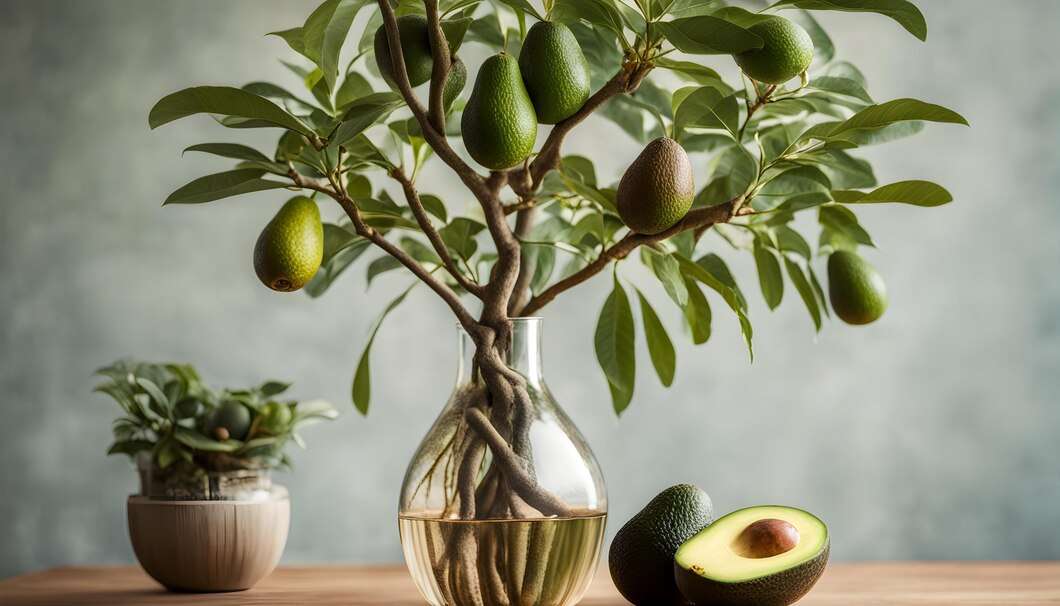
In conclusion, growing an avocado seed into a tree can be a rewarding and enjoyable experience. With the right care and attention, you can watch your avocado plant grow from a tiny seed into a beautiful tree that produces delicious fruit. By following the steps outlined in this guide, you can ensure that your avocado tree thrives and provides you with an abundant harvest for years to come. Happy gardening!
Frequently asked questions And Answer
To grow an avocado seed, first, remove the seed from the avocado and wash off any remaining fruit. Then, stick three or four toothpicks into the seed at even intervals around the middle. Place the seed in a glass of water with the bottom half submerged. Change the water every few days and wait for the roots to grow.
It can take anywhere from 2-6 weeks for an avocado seed to sprout. Be patient and continue changing the water regularly.
Yes, once the roots have grown, you can plant the avocado seed in a pot with well-draining soil. Make sure to leave the top half of the seed exposed.
Avocado plants like consistently moist soil, so water them regularly, but be sure not to overwater. Let the soil dry out slightly between waterings.
Avocado plants need plenty of sunlight, so place them in a sunny spot indoors or outdoors. They thrive in bright, indirect light.
It can take anywhere from 3-15 years for an avocado tree grown from a seed to bear fruit. It’s a long process, but the result is worth it.
Yes, you can grow an avocado tree indoors as long as it receives plenty of sunlight. Just make sure it has enough space to grow and thrive.
Some common problems when growing avocado trees include overwatering, underwatering, and pests. Make sure to monitor the soil moisture and inspect the plant for any signs of pests or disease.
